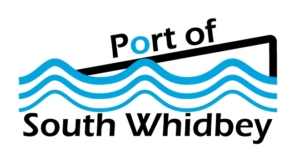OUR HISTORY
The Port has gone through a number of project development stages in its 46-year history. The Port District of South Whidbey Island was originally formed on August 29, 1961 as the “Langley Port District.” The impetus for its formation was the community’s desire to create a major year-round boat marina and harbor development serving all of South Whidbey at Langley. In 1968, the district commissioners found that the tax base in the Langley and Sandy Point Precincts was insufficient to support the planned harbor development and decided that expansion of the district was necessary. On November 5, 1968, the district’s present boundaries were approved by a majority of the voters. In November of 1979, the name of the district was officially changed to “The Port District of South Whidbey Island.”
Beginning in 1965, the Port moved toward the goal of developing a 6.8 acre marina and harbor facility on the Langley shoreline fronting the intersection of First and Anthes Avenues. In 1975, after numerous revisions to the Langley Harbor expansion project plan, the Port was faced with economic, political, and regulatory realities and abandoned the original project.
During the 1980’s the Port, City of Langley, and the State Interagency Committee for Outdoor Recreation (IAC) collaborated to construct a 40 slip transient moorage marina. The facility consisted of floating concrete finger piers anchored to treated timber pilings, all protected by a floating tire breakwater. The Port contributed $110,000 and $240,000 was provided by the IAC. Unfortunately, in 1986 the floating breakwater sank. A new wood-pile breakwater system to protect 38 slips was constructed with the IAC funding an additional $100,000 and the Port another $40,000 to supplement the $170,000 in councilmatic bonds issued by the city. The finished project total cost was $660,000. In 1985 the Port District contributed another $30,000 to the Langley Marina and the IAC funded another $100,000 for additional work in the harbor.
After the Langley Marina was completed the Port began to focus its efforts and resources toward marine parks and boat ramps. Over the past 25 years the Port has developed, upgraded, and maintained facilities at Phil Simon Park, Dave Mackie Park, Mutiny Bay Facility, Holmes Harbor Boat Ramp and Freeland Park, Clinton Dock, Possession Beach Waterfront Park and Bush Point Boat Ramp. It also performed a feasibility study in 1985 of the Whidbey Airpark (Porter Field) becoming a public facility. This project was discontinued in the early 1990’s after being deemed by public opinion as not feasible.
In 1990 the Port’s adopted a resolution “relating to the interference with public use and enjoyment”. This resolution articulated the ports commitment to protect the air and water quality of its district from environmental hazards such as toxic or hazardous substances. In 1992, the resolution was expanded to include noise standards as described in Resolution 92-5.
The Port has successfully executed land acquisition, developed projects and has been a reliable inter-agency partner. The Port has executed many of its projects in cooperation and partnership with Island County, the City of Langley, the Port of Coupeville, the State Interagency Committee for Outdoor Recreation (IAC) now known as “Recreation and Conservation Funding Board” (RCFB), the Washington State Department of Transportation (WSDOT), The Washington State Ferries (WSF), and the Washington State Department of Fish and Wildlife (WDFW).
During the past 20 years the Port’s collaborative efforts with Island County and the City of Langley combined with funding from the RCFB has proven to be a successful approach for improving shoreline recreational facilities. This approach has leveraged local dollars by securing state tax dollars through grants from the RCFB. Some of the RCFB grant programs, which the Port has previously secured, include the Aquatic Lands Enhancement (ALEA) and Boating Infrastructure Grants (BIG). Funding from the RCFB, the Salmon Recovery Funding Board, and 3 other entities will henceforth be administered by the Recreation and Conservation Office (RCO).
In these past relationships the projects were usually not managed by the Port with regard to oversight of the permit and construction process. The Port provided funds but was not directly involved in the details or day-to-day operations. However, starting with the Clinton Beach project in 2003, the Commissioners committed to a more active role in project implementation and management with the hiring of a full-time professional manager.
The Port will continue the direct management of new construction projects, as well as the subsequent development of Port operations and maintenance staff for its facilities. Port leadership is committed to efficient use of public resources and has directed staff to coordinate with other public and private entities in order to implement the most cost effective approach for operations and maintenance.
